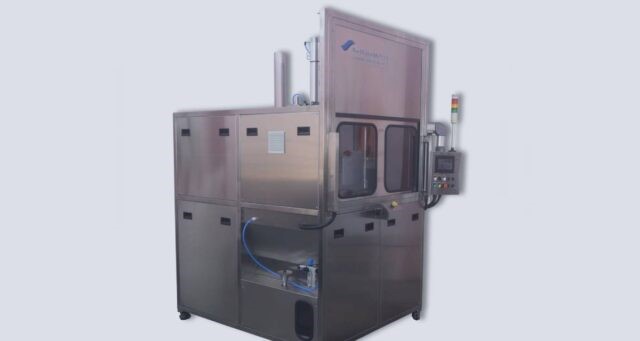Washing is a crucial step in the process of preparing parts for coating or welding. For many types of parts and components, ultrasonic cleaning is the safest and most effective way to get the job done. However, since ultrasonic cleaning is just one of many different parts-washing methods at your disposal, you’ll want to understand how it works before deciding whether it’s the best solution for you!
When used for the right application, you can sit back and relax while the ultrasonic cleaning system does the job efficiently for you. Ultrasonic Cleaning machines make your cleaning job a lot simpler and also helps save a whole lot of time and manual labour.

What are ultrasonic cleaners?
Ultrasonic cleaners incorporate ultrasonic frequencies to clean. They may also integrate water or another appropriate cleaning liquid in their working mechanism. It contains a tank where the target item is agitated. This rubs off and cleans the contaminants or germs on the object’s surface. The agitation is done by using high-frequency sound waves. Ultrasonic cleaners come in various sizes and mechanisms depending upon the size & material of the object to be cleaned, type of use and various other factors. For instance, industries use commercial ultrasonic cleaners that are generally huge in size with high loading capacity. On the other hand, ultrasonic cleaners meant for a personal use are small and also portable.
Components and working of ultrasound cleaners
Let’s have a look at the structural design of ultrasound cleaner;
- Tank: Ultrasound cleaners feature a tank in which the objects to be cleaned are placed. The accommodation capacity of the cleaners varies depending upon the utilization. The tank stores the cleaning solvent like Sonic Soak. Mostly stainless steel is used in the fabrication of the tank to prevent any corrosion due to the ultrasonic vibrations and the cleaning solvent or chemical used in the tank
- Transducers: The ultrasound cleaners incorporate piezo-ceramic transducers attached to the external body of the tank.
- Outer Frame: Mainly, stainless steel or mild steel is used in the fabrication of the ultrasonic cleaner tank frames. These make the machine body lightweight and sturdy.
- Control Unit: It comprises of a motherboard for the ultrasonic transducers, a PLC in case of any automation requirement & other controllers. The motherboard is responsible for the control of the ultrasonic frequency. This will be configured and tuned by the ultrasonic cleaning equipment manufacturer. There will also be other small controllers to control turn on/off of the transducers & heaters if any used.
Principles of working
The cavitation phenomenon is key step in the ultrasound cleaning process. The phenomenon is created through the generation of high-frequency sound waves. The cavitation then acts on the object’s surface with a vibrational movement of scrubbing and thus cleans the surface of any contaminants thoroughly. The frequency of ultrasound waves range from 25 to 40 kHz based on the requirement.
Understanding Cavitation
The Cavitation term encompasses the formation of microscopic bubbles. When ultrasonic sound waves travel through a medium, they may create a void. This void underwater bursts with a lot of torque. This implies pressure on the impurities present on the object’s surface. It results in their dislodging from the surface. It acts as a scrubber by trapping and removing the impurities.
Ultrasonic cleaners contain a tank. This holds the fluid, and the target object is placed inside it. The generator or power adaptor transfers the Alternative Current into ultrasonic frequency. Further, the transducer transfers the ultrasonic energy into mechanical energy. The cleaning solvent of the ultrasound cleaner has surfactants. These help decrease the surface tension, which ultimately boosts the cavitation process. It results in more effective cleaning.
Conclusion
Ultrasonic cleaners are used in hospitals, industries, houses, shops, etc. These are used to clean various items like glass, metal, alloy, etc. They effectively eradicate dirt, microscopic debris, pollutants, chemicals, fingerprints, etc. from the surface of the components to be cleaned.


